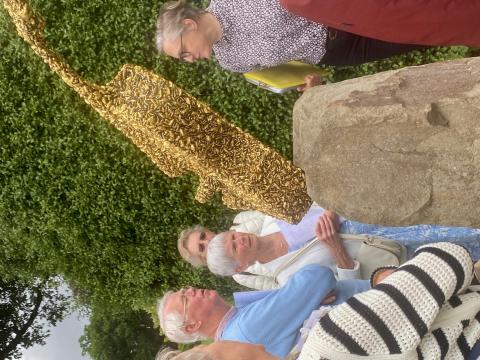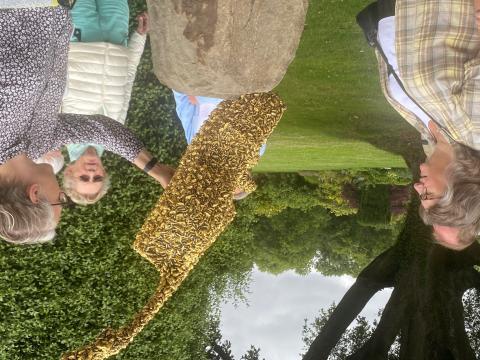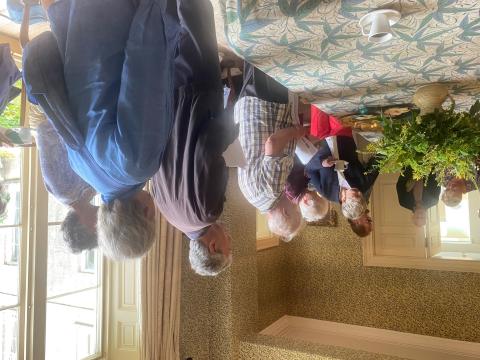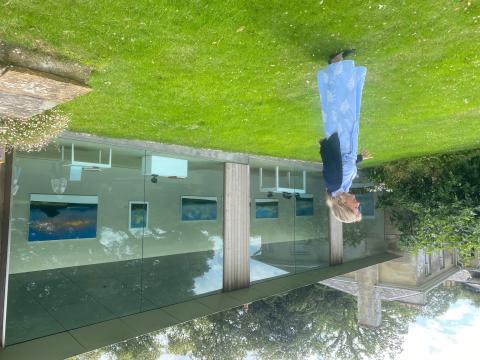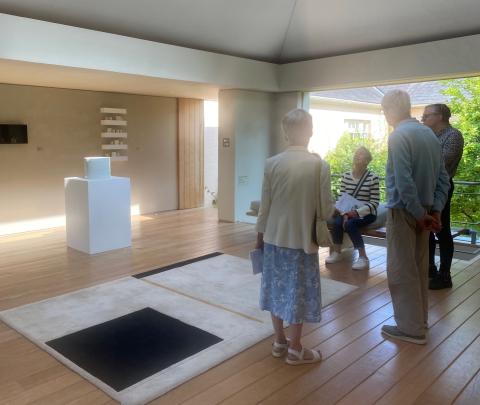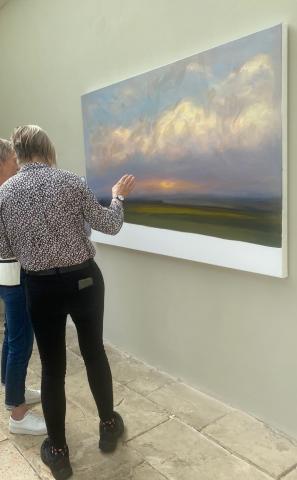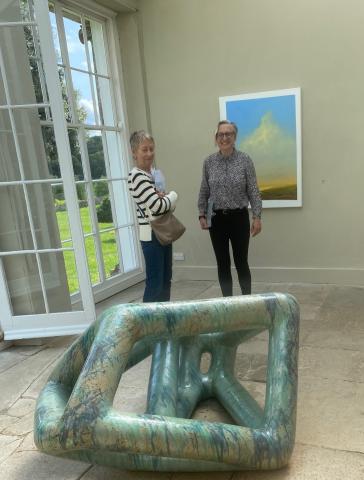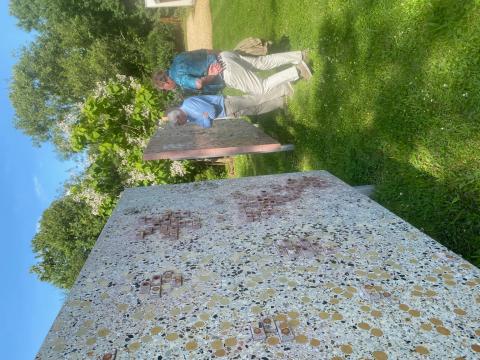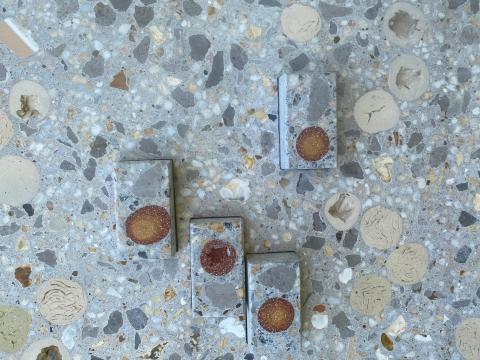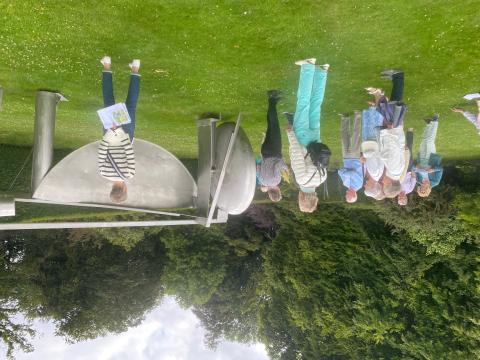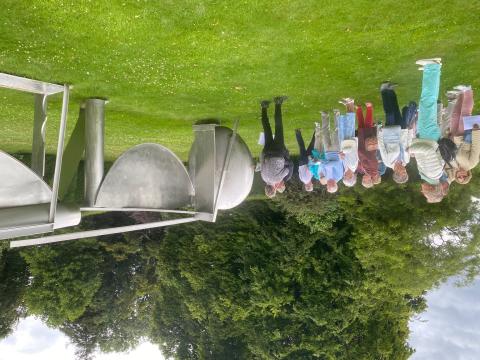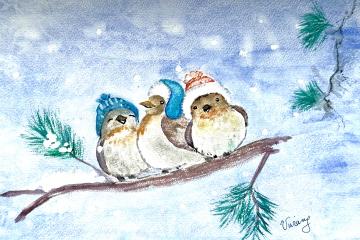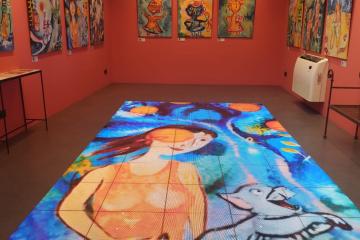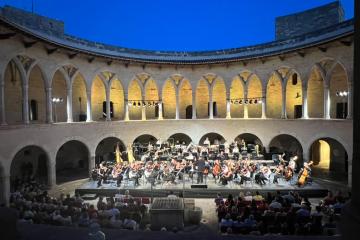Our December local lecturer, Olaf Winkler, journalist, architecture critic, guide and artist, introduced his lecture
The Arts Society Kington Langley Summer Visit to LONGFORD CASTLE AND ROCHE COURT
The Arts Society Kington Langley Summer Visit to LONGFORD CASTLE AND ROCHE COURT
19 Aug 2023
We found a hidden gem near Salisbury for a most enjoyable visit in July.
Longford Castle, seat of the Earl of Radnor, partly Elizabethan and partly Victorian, with its corner towers recalling the age of chivalry, sparked our interest as we drove up to the front entrance.
The splendours within were mainly gathered in the 18th century including some very important, elegant furniture. The National Gallery has a special relationship with Longford Castle as it contains one of the greatest collections of paintings in this country, formed by ancestors of the Earl of Radnor. Today, many very important paintings remain at the Castle whilst others are on loan to the National Gallery.
We were very lucky to have very knowledgeable guides, - Paul Chapman, TAS Lecturer, who was familiar to us as he had lectured to us on Stanley Spencer during the Covid period. The other, Sean Moran, was on his first day and we knew him in his earlier life as Chair of TAS Nadder Valley. Along with regular guides from the Castle we knew we were in excellent hands.
Some of us believed Longford to be one of the very best ‘stately home’ we had visited. It is the family home of the present Earl and as such felt and looked so comfortable, cosy, well-kept and draught free! It just happened to also contain the most beautiful furniture, paintings, velvet ‘wallpaper’ and much else besides. We saw works by Gainsborough, Rubens, Holbein, Lorrain, Van Dyck, Reynolds, Constable to name just a few.
In the Picture gallery was an extraordinary piece of furniture and also a piece of sculpture. This was the steel armchair signed by Thomas Rucker in 1574, belonging at one point to the Holy Roman Emperor, Rudolf II, then looted by Swedish troops in 1648 then to Gustav Brander who sold it to the second Earl for the huge sum of £1000 - coincidentally made around the same time as Longford castle.
The treasures just kept on appearing, room after room and we were entranced by everything we saw. We still had time to enjoy the formal gardens before leaving for lunch.
After retiring to The Radnor Arms for a very enjoyable lunch we went on to visit Roche Court Sculpture Park, a commercial gallery specialising in 20th and 21st century art, with sculpture sited in the gardens, together with further works exhibited in their award-winning contemporary indoor spaces. The weather was kind to us and allowed us to enjoy this well-situated house and garden set within the rolling Wiltshire countryside.
In 1994, the gallery moved from London to its current location at Roche Court, East Winterslow in Wiltshire. The house was originally built in 1804 for the family of Admiral Nelson.
After our welcome by Laura Joy, Head of Education at Roche Court we were introduced to some of the work in the garden. Firstly, we discussed ‘Double Tent’, by Anthony Caro. This large piece in stainless steel encouraged much discussion especially the placing of the sculpture directly on the ground rather than on a plinth.
Then we looked in detail at ‘Celloswarm’ by Bill Woodrow. This beautiful piece was constructed in Bronze, Stone and Gold Leaf. The surface is made up of a swarm of bees. In the late 1980s, he began to transition from the direct manipulation of found objects to casting works in bronze and we were fascinated by that surface texture.
During tea in the main house with Madeleine Bessborough, the owner and Director of The New Arts Centre, Roche Court, we heard a little of the background to the Centre and Madeline’s passion for introducing young people to art. Afterwards we saw the work of Peter Frie in the gallery. His paintings and sculptures are inspired by Salisbury Plain and the Wiltshire countryside
We saw some of the permanent collection of the work of Edmund de Vaal’s work in the Artists House. His themes of memory, loss and exile are brought into renewed life through the potential of ceramics
Near the end of our tour we saw some of the latest pieces by Jacob van de Buegal, ‘Mutation Series - Handmade ceramic components, concrete, aggregate and recycled aggregate, liquid rust, self-healing concrete
‘In more recent work, Jacob’s preoccupation has lain with interpreting man’s attempts to rationalise the abstract: human identity in DNA samples and disease patterns in epidemiology. Jacob’s output re-humanises these abstractions in an endeavour to depict the human condition. His original use of materials, such as ceramics and concrete, embrace their extraordinary ability to capture human traces and endeavours, in their conversion from the soft, every day and ordinary to the hard and frozen sculpted object. Artefacts designed to withstand the scrutiny and ravages of time’. (New Arts Centre)
The staff were very welcoming and introduced us to many of the sculptures both inside and out, teasing out our opinions of the works and, I for one, learned to look more insightfully at many of these great works of art.
A wonderful day, enjoying so many treasures and each other’s company and we wish to thank all the organisers and guides who made the day so special.
Jackie Jones
About the Author
JackieJones
- Kington Langley
- Visit
- Longford Castle
Article Tags
JOIN OUR MAILING LIST
Become an instant expert!
Find out more about the arts by becoming a Supporter of The Arts Society.
For just £20 a year you will receive invitations to exclusive member events and courses, special offers and concessions, our regular newsletter and our beautiful arts magazine, full of news, views, events and artist profiles.
FIND YOUR NEAREST SOCIETY
MORE FEATURES
To further strengthen our connection with the island’s vibrant art scene, the Arts Society Mallorca is delighted to l
After careful thought, we will be discontinuing the Music Monthly newsletter.



